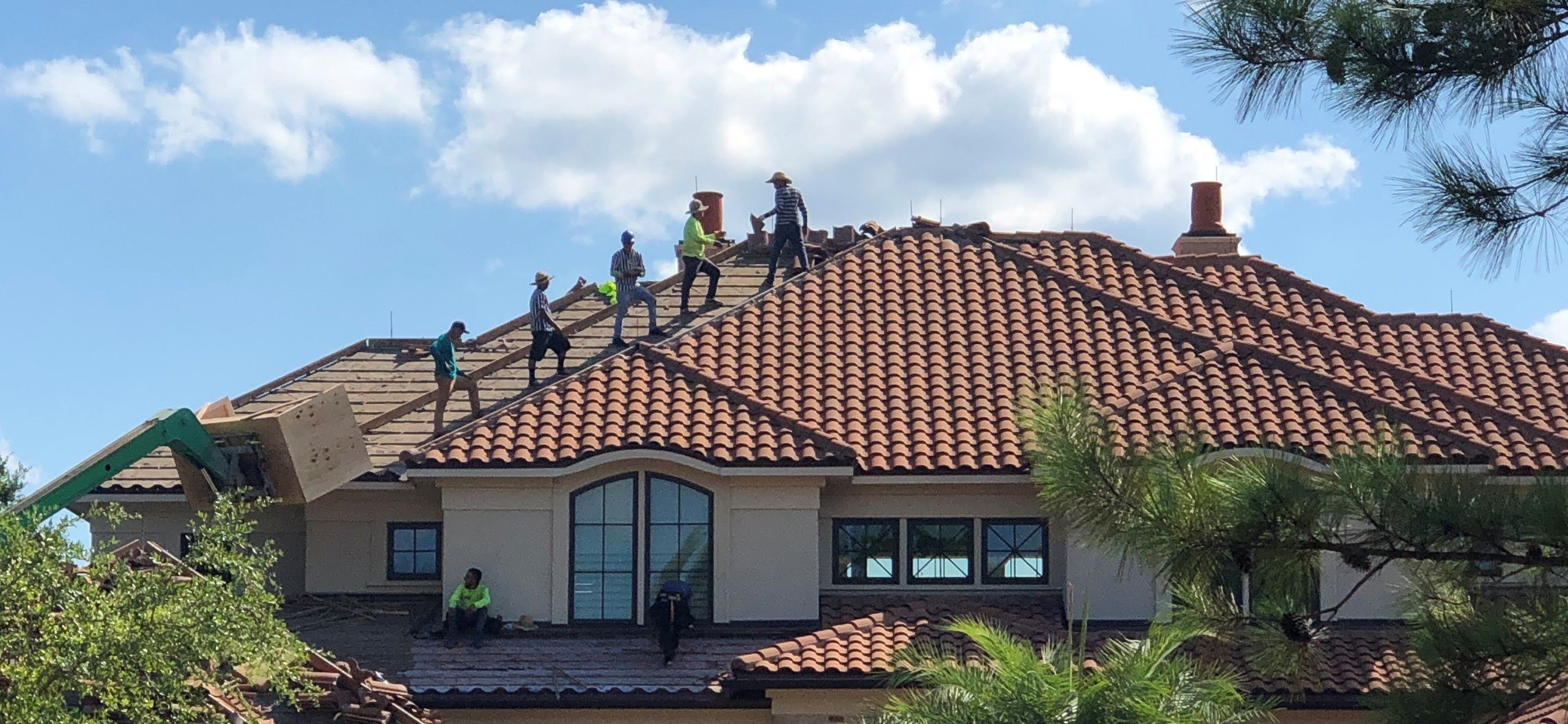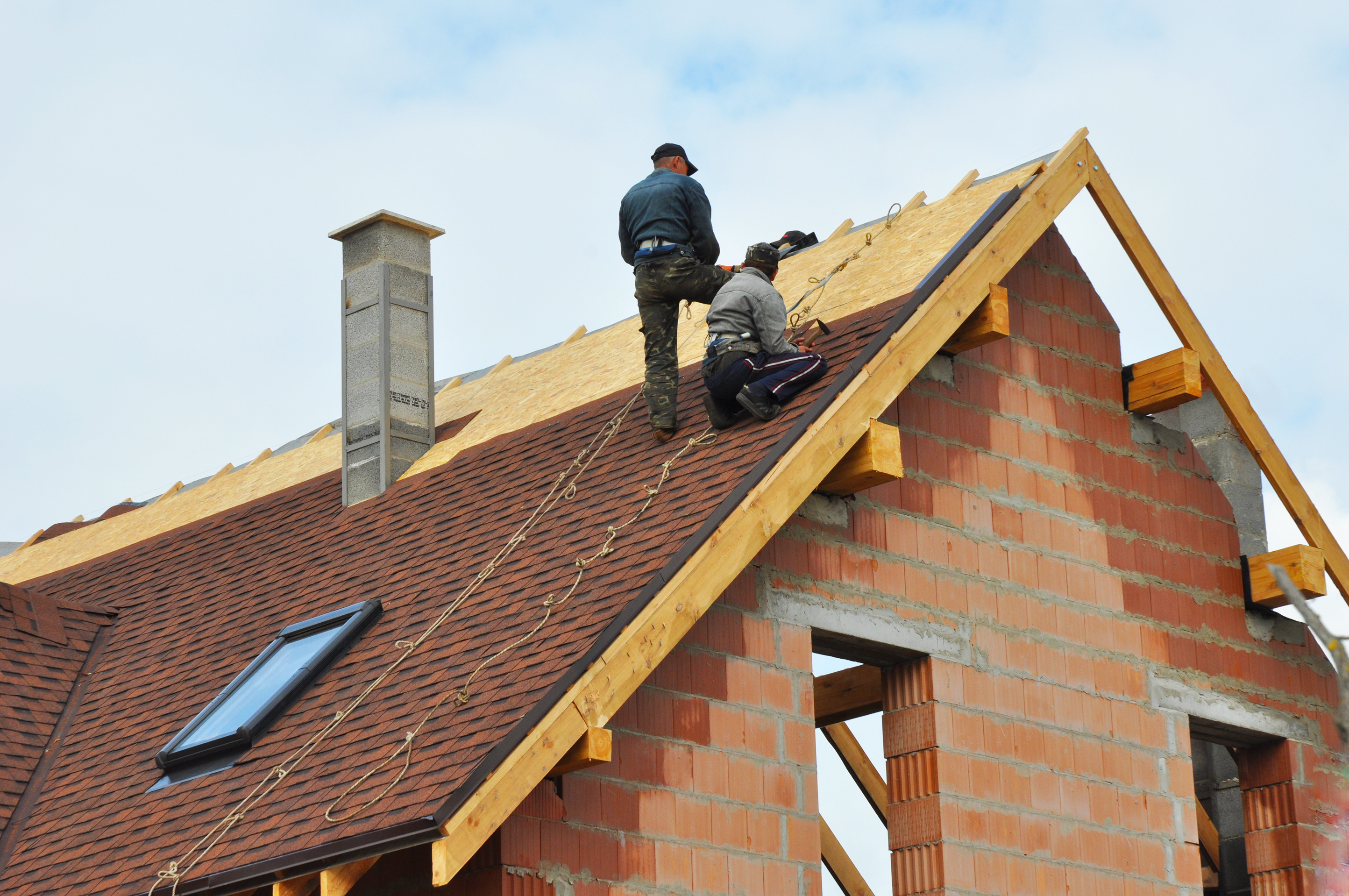Just How Gainesville Roofing Companies Can Change Your Home's Outside
Just How Gainesville Roofing Companies Can Change Your Home's Outside
Blog Article
Finest Practices for Ensuring Correct Roofing Air Flow
Ensuring appropriate roof ventilation is vital for the durability and efficiency of a roof system. A balanced intake and exhaust air vent proportion, commonly 1:300, plays an essential function, with intake vents preferably put at the reduced edge of the roof for amazing air access and exhaust vents at the height for cozy air exit. Normal inspections to recognize clogs and preserve clear air movement are extremely important. Furthermore, maintaining insulation away from vents is important to stop airflow constraint. Comprehending these foundational elements sets the stage for even more thorough understandings right into installation and maintenance techniques that can dramatically improve your roof's performance.
Understand Ventilation Fundamentals
Correctly comprehending air flow basics is vital for ensuring the durability and performance of roofing systems. Reliable air flow mitigates wetness buildup and temperature level extremes in the attic, both of which can bring about significant structural damages with time. A well-ventilated roof assists in stopping typical issues such as mold growth, timber rot, and ice dams, which can endanger the integrity of the roof covering materials and the underlying structures.
The main objective of ventilation is to facilitate the motion of air, permitting for a regular exchange between the interior and exterior environments. This balance is achieved via a combination of consumption and exhaust vents that collaborate to preserve ideal airflow. Consumption vents, generally situated along the soffits or eaves, enable fresh air to enter the attic room space, while exhaust vents, often situated at or near the roof covering ridge, allow warm, humid air to leave.
Secret variables influencing the effectiveness of roof covering air flow consist of appropriate positioning, ample sizing, and making sure that both intake and exhaust vents are unblocked. Normal examination and upkeep are important to recognize potential blockages, damages, or ineffectiveness in the ventilation system, therefore protecting the roof's efficiency and sturdiness.
Kinds Of Roof Covering Vents
Roof covering vents play a crucial role in keeping reliable attic air flow and, by expansion, the general health and wellness of the roof covering system. Different types of roofing system vents are readily available, each with distinct benefits customized to particular roof covering needs.

Soffit vents are installed under the eaves and job in tandem with roofing vents to ensure a well balanced consumption and exhaust system. By permitting cooler air to get in from below, soffit vents facilitate the expulsion of warm air with top vents. Gable vents, located on the exterior walls of the attic room, offer an additional reliable remedy, specifically in homes with saddleback roofs.
Examine Your Current Air Flow

Following, think about the age and condition of your roof covering materials and ventilation parts. Older systems may not abide by present building regulations or might have degraded in time, reducing their performance. Conduct a detailed assessment to identify any kind of indications of wear and tear, such as corrosion, damage, or spaces that could endanger the system's efficiency.
Additionally, determine the attic room temperature and moisture levels. High temperatures and moisture can show inadequate ventilation - gainesville fl roofing companies. Make use of a hygrometer and thermometer to get precise readings, contrasting them with outdoor problems. Relentless inconsistencies recommend potential concerns that require dealing with.
Setup Best Practices
Efficient installment of roofing ventilation systems is vital for making certain optimal efficiency and durability. Correct installment begins with understanding the certain air flow demands of the building and the roofing system it covers. This involves calculating the correct ratio of intake to wear down vents, generally adhering to the 1:300 policy, which specifies one square foot of ventilation for each 300 square feet of attic room flooring space.

Consumption vents should be set up at the roofing's reduced side, frequently in the soffits, to permit trendy air to enter. Exhaust vents, on the various other hand, should be installed near or at the roofing system's optimal to facilitate the exit of cozy, moist air.
Seal all vent connections diligently to avoid air leakages and prospective water infiltration. Use top notch materials and comply with supplier guidelines to ensure durability and efficiency. Furthermore, integrating ridge vents with baffles can significantly improve air flow effectiveness by stopping wind-driven rain and snow from entering the attic.
Inevitably, precise installation of roofing ventilation systems minimizes possible concerns such as mold development, ice dams, and architectural damages, making certain the roof's stability and you could try this out the structure's general health and wellness.
Routine Upkeep Tips
Uniformity in upkeep methods is essential to guaranteeing the lasting efficiency of roofing air flow systems. Normal assessments are essential, ideally executed biannually-- in the spring and autumn. During these evaluations, make sure that vents are without particles, nests, and other obstructions that can restrain air movement. Look for any kind of signs of dampness build-up or mold, as these can show inappropriate air flow or leaks (gainesville fl roofing companies).
Cleaning up the vents is another vital job. Use a soft brush or a vacuum cleaner to remove dust and debris from consumption and exhaust vents. Beware not to damage the vent displays or louvers throughout the procedure. In addition, examine the attic room space for any type of indications of water damages, which might endanger the integrity of the roof covering system.
Proper insulation is similarly important. Make sure that attic insulation does not obstruct the vents, as this can drastically restrict air flow. If any insulation has moved or settled, rearrange or replace it to preserve an effective obstacle.
Lastly, change any kind of harmed or missing out on components quickly. Broken vents, broken roof shingles, or tatty blinking can all contribute to insufficient air flow and needs to be resolved right away. Routine maintenance guarantees that the roof covering ventilation system functions that site optimally, thus extending the lifespan of the roof itself.
Conclusion
Making certain correct roof air flow is vital for preserving the effectiveness and durability of a roof system. Adherence to the 1:300 intake and exhaust vent ratio, combined with the strategic placement of vents, is important.
A well balanced intake and exhaust vent ratio, commonly 1:300, plays an essential role, with consumption vents preferably placed at the lower side of the roof for trendy air access and exhaust vents at the peak for warm air departure. Consumption vents, normally situated along the eaves or soffits, enable fresh air to enter the attic area, while exhaust vents, often positioned at or near the roof covering ridge, enable warm, moist air to escape.
Soffit vents are mounted under the eaves and work in tandem with roofing system vents to make sure a well balanced intake and exhaust system. By permitting cooler air to enter from below, soffit vents help with the expulsion of hot air with check this site out upper vents. Adherence to the 1:300 intake and exhaust vent ratio, paired with the strategic placement of vents, is vital.
Report this page